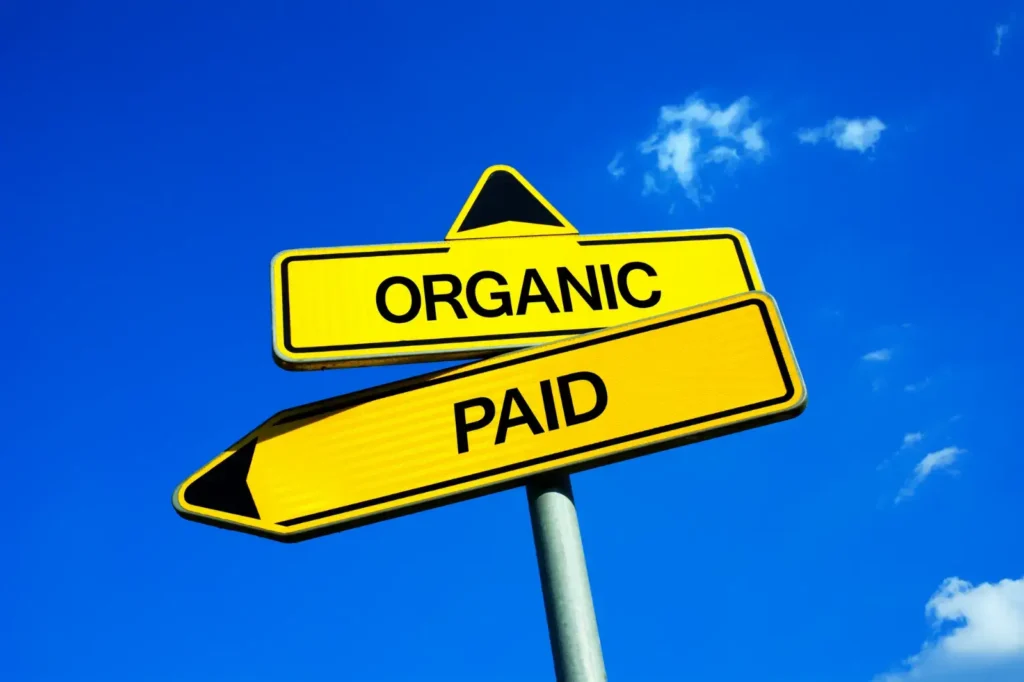Unlike the iconic movie Field of Dreams, no one comes to your website solely because you built it. With over 1.2 billion websites online as of March 2017, standing out among the crowd has become no mean feat.
Whether you have a great idea for an online business or simply want to get your existing business on the web, you need visitors. You need them fast, and you need them the flow of visitors to be sustainable over the long haul term.
It’s obvious that visitors are needed to generate sales and thus create revenue, but determining the best way to obtain these visitors is much less obvious. Given that the rich visitor data and analytics on your website is critical information for a company’s future decision-making, how do you decide which strategy to take with your digital marketing?
Let’s start with the basics.
Organic Traffic
Organic traffic is any visitor that comes to your page without paid advertising. When people search for your site, or specific keywords, your site appears in a natural ranking in the search results. When a person clicks thru to your site they are ranked as organic traffic.
Search engines like Google, Yahoo and Bing rank your website based on a variety of factors like content, coding, backlinks, and website architecture. These search engines consistently seek to provide search engine visitors with website results that are both trusted resources (for the searched keywords) and that provide quality content. Companies invest heavily to optimize their websites for better search ranking (Search Engine Optimization – SEO), because they know that over time organic traffic will increase and outperform paid traffic.
Paid Traffic
Paid traffic is any visitor that comes to your page as a result of a paid ad on a search engine or advertising network. This type of advertising is called “Pay Per Click”. Paid search ads include a call to action (CTA) and are ordinarily identified as advertising in the search rankings. When a person clicks thru to your site via an ad they are ranked as paid traffic.
Paid ads are a fairly deliberate technique to get instant gratification. Your website is listed either at the top of the page or to the side based on the budget and keyword strategy you develop. Rather than working to establish backlinks or develop rich content, you can go directly to the top of the page – with the right budget.
Breaking It Down
Paid placement allows you to get visitors immediately and thus gives you the ability to quickly gain market share. For a company that needs to demonstrate sales right away, a paid campaign will do that. You can control your sales volume despite your organic ranking. However, it also ends the moment you run out of cash, which can result in start/stop interruptions that affect nearly every part of your business.
If an SEO strategy is in your future (or now!), paid placement gives you essential data on keywords and visitors to devise your SEO strategy. Only 20% of searches result in an ad click, so your market share with organic search will outpace paid ads over time. But the paid placements give you quick, reliable insight into which terms should be included in your search engine optimization.
Organic traffic will outperform paid placement in the long run for nearly every measurable statistic. Organic also outperforms paid for other important measurements like overall percentage of traffic, quality of traffic/visitors, and ROI. Organic will have higher costs and longer timeline to reach your first sale, but those costs will go down over time thereby allowing you to pull back on your paid ad efforts – or eliminate it entirely if it’s not needed for market share or testing new areas to expand your SEO.
The only way to effectively determine your SEO strategy is to know which keywords are being searched for and which ones offer the highest conversion rates. With this information, calculating your costs and strategy are as simple as conducting a professional evaluation of the competition, determining what it will take to compete with them, and what costs will be associated with reaching that level.
This is why you should always be wary of any company that offers tiered SEO packages with a “one size fits all” approach. Since SEO strategy is exclusively tailored to your industry and your company, “Bronze, Gold, and Platinum” packages are highly dubious terms that offer almost no insight into how your website will perform six months to a year down the road. Don’t be deceived.
So which is better: Organic or Paid?
The answer largely depends on your goals.
Want to generate immediate traffic? Use paid ads.
Want to outperform your competition in organic search engine ranking? Invest in a long term SEO strategy for organic traffic.
Want to quickly earn market share? Paid.
Want to taper off of Paid ads? Invest in SEO.
Want to figure out which SEO strategy will give you the best ROI? Test the market with paid ads.
Were we to counsel you on a comprehensive plan that promptly builds website traffic and keeps it long term, we’d tell you to start with both. Invest in a paid ad strategy to get quick results for immediate sales and market share while also investing in SEO to give your website staying power in organic rankings. Over time you can pull back on paid ads (or not) while still benefitting from a steady flow of visitors reaching your site through organic search results.
Ready to take your business to the next level? Contact us. We’re here to help.

